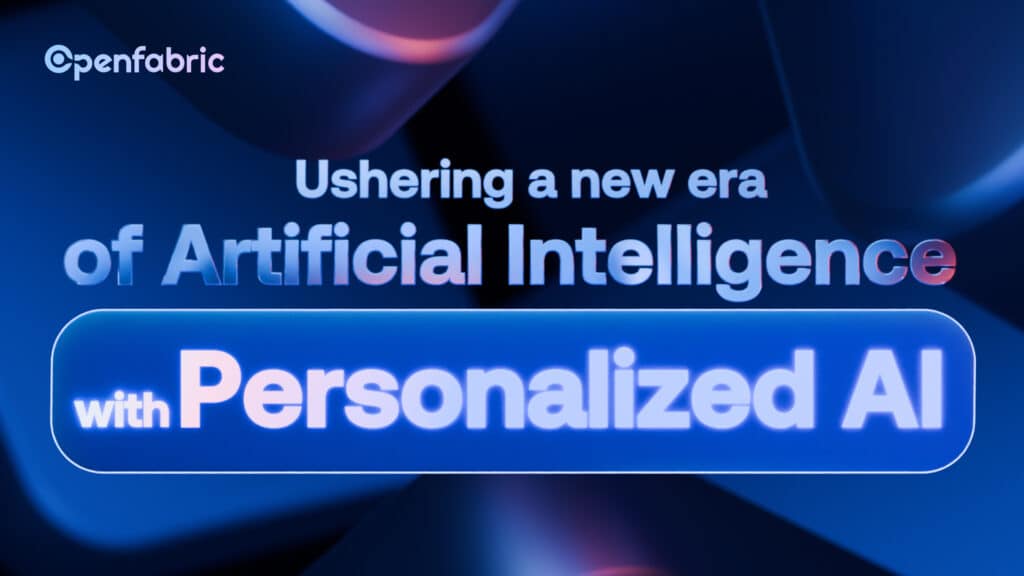
January 24, 2025 6 minutes read
Ushering A New Era Of Artificial Intelligence With Personalized AI

The transformative power of artificial intelligence has continued to improve since its inception. Every day, experts make discoveries with artificial intelligence and its applications. Although the growth of artificial intelligence has been substantial, the work is not nearly done. This has led to the development of many more artificial intelligence systems, and ultimately personalized AI.
Personalized artificial intelligence puts artificial intelligence into users’ pockets. It also makes the use of AI easier and provides results that better suit the user’s query. However, we haven’t had personalized AI systems for that long. Artificial intelligence evolved to match the growing user expectations of today’s digital age. This is where the power of the personalization of AI comes in.
Personalizing AI has been key in transforming the way individuals interact with AI systems, businesses interact with customers, and the provision of a better user experience. In this article, we will discover more of the benefits and use cases of personalized AI, and explore how it works.
Let’s dive in!
What is personalized AI?
Personalized AI refers to the use of artificial intelligence to tailor experiences, recommendations, and results of queries specifically to individuals. This is based on the user’s unique data and internet behavior. By doing so, this AI system can create highly unique interactions that are relevant and personal to each user.
Personalized AI differs from traditional AI in that, traditional AI relies solely on a generic method of interacting with users. Personalized AI also uses mechanisms that enable it to perform better than traditional AI. Therefore, AI that is personalized has more benefits in how humans interact with AI systems, and with each other.
Let’s see some of the benefits of personalized AI
What are the benefits of personalized AI?
Personalization in any industry has numerous benefits. In artificial intelligence, the benefits of personalization are cut across various sectors like finance, healthcare, and education. This is because every experience with AI in these sectors is tailor-fit to the individual’s needs. Here are some specific benefits of personalization in AI:
Improving user experience
It is safe to say that the first goal of personalization is to enhance user experience in any industry. User experience opens the door for other opportunities in an industry. By keeping a clientele base of users with a satisfactory user experience, businesses have increased engagement.
Reducing cost and increasing efficiency
The personalization of AI allows businesses to automatically provide recommendations to their customers according to the products or services they are selling. Automating the process of recommendation, which is a routine task, reduces the cost of business operations. This goes hand-in-hand with increasing the efficiency of the business operations as more work is done in less time.
Revenue growth
Time, they say, is money. As personalization increases the efficiency of business operations and saves costs, it encourages the growth of the company’s revenue. With the new available time, business owners can focus on other aspects of the business to generate more revenue.
Improving health and wellness
Apart from the business benefits of personalized AI, it also has similar benefits in health care. Personalization allows treatment to be point-specific for the patient. Therefore, patients can be treated for their illnesses based on their genetic makeup and individual drug reactions. This can ensure a more effective treatment method for the patient involved.
Improving education and learning
Even the education industry is not spared the benefits of personalization in AI. It is common knowledge that the currently available educational methods are not ideal for everyone. It is a one-size-fits-all method of learning. However, personalization changes the story as it can tailor each learning experience to make it unique to the student.
How does personalized AI work?
The basic concept behind the working of personalized AI involves the use of machine learning (ML), natural language processing (NLP), and generative AI. By combining all of these elements, AI collects the data from the user. This data involves the user’s behavior, interactions, and preferences alongside the type of device being and time of the day for context. This is the data that personalized AI is trained on.
This data is then sifted through and carefully analyzed to understand the user’s behavior and identify trends and patterns. AI then groups similar data in a process known as “audience segmentation”. After audience segmentation is complete, the AI trains on this information. When this is complete, it can now recommend products or services that are in line with the user’s preferences and demographics.
Over time, the AI continues to learn from mistakes and the user’s experience. In addition, it also adapts constantly to ensure that its recommendations remain fresh and up-to-date.
5 applications of personalized AI
AI-powered chatbots and virtual assistants.
AI chatbots and virtual assistants use personalized AI to provide unique responses and recommendations to users. By using NLP, they interact with users using conversational language and respond to queries accordingly. Virtual assistants like Siri and Alexa have already seen wide applications in homes, offices, and our devices. Chatbots are constantly used by businesses to provide excellent customer service, provide product recommendations, and even respond to technical queries.
AI personalization in marketing
The technological age has made business and advertising easier. With AI personalization, business owners can easily create ads that only target a specific group or demographic. This increases the effectiveness of marketing and reduces the cost of advertising.
Predictive analysis and recommendation systems
Predictive analysis systems use personalized AI to predict the needs of their users and send them recommendations accordingly. By analyzing historical data and plotting it against the current trend, AI can predict what a user wants next and offer tailor-fit recommendations.
Wellbeing
Smart devices are being equipped with personalized AI that can monitor the health of the user and provide treatment solutions. For example, medical apps like the Openfabric Genome generator, analyze a patient’s gene, highlighting important components. By doing so, it exposes the aspect of the DNA strand that is defective, and targeted treatment can commence right away.
Education
The education industry now uses personalization in AI to optimize the learning experience for students. Thus, enabling them to study in a more welcoming environment that caters to their individual needs.
Challenges of personalized AI
Although there are several benefits of personalized AI, it is not without its limitations. Here are some challenges to consider:
- Availability of quality data: personalized AI is only as good as the data with which it was trained. Unfortunately, access to accurate data for this training is difficult. This proves a major challenge to the development and adoption of personalized AI.
- Eliminating biases and unfairness: AI systems trained on data that have bias are unfair. Therefore, in the training of AI models for personalization, the data must be fair and transparent.
- Regulations: regulations about data privacy and security create a regulatory hurdle. As personalized AI becomes more widespread, there might be a stricter implementation of these regulations.
Openfabric AI and the future of personalized AI
Openfabric AI uses personalized AI technology to ensure that its users get the best experience using AI products. Using personalization, we have created more sophisticated and effective AI tools. These AI tools such as the trading bot have been effective in solving problems for users.
However, as the internet of the future, we are set to explore the boundaries of personalized artificial intelligence by creating an array of tools that can adapt faster to the existing conditions.
Integrating Openfabric with edge computing will give AI the ability to have real-time personalization to create new experiences for users.
Openfabric AI is the home of personalized AI tools and applications. Visit our MARKETPLACE today to explore these tools.
Conclusion
The use of personalized AI levels the playing field for small businesses to compete against big establishments. It is a transformative innovation that allows for a better experience in the usage of AI. Although the use of personalized AI is widespread, the challenges that face personalized AI have to be resolved for better adoption.
Visit our WEBSITE today for more updates.

